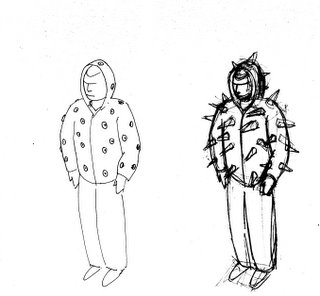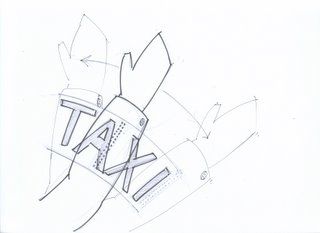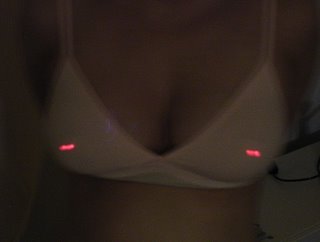3 total, hope one works:
Personal Space SuitPersonal space—the physical space surrounding an individual that is required by the individual in order to maintain a sense of control and security—is unique to each culture and to the individual. Personal space is also in a constant state of fluctuation, depending on the social context in which an individual finds him- or herself.
The physical space which separates two strangers engaged in an exchange is vastly greater than the distance which separates intimate friends sharing a secret. This point was famously illustrated in a Seinfeld episode in which a character was known as a “close talker.” This character’s obliviousness to other people’s personal spaces caused him to repeatedly trespass people’s comfort zones, causing them to recoil and in some cases, practically backbend to avoid his intrusion. Obviously, this was played for maximum comic effect, but it was a great example of how our society has very clearly defined personal spaces.
We all experience these sorts of invasions on a daily basis—when we squeeze onto a crowded subway, or when waiting in line for a coffee. If someone is a little too close, we begin to feel threatened and uneasy. Equally, if we’re simply having a discussion with a colleague or classmate and they begin to back away—in effect, widening the personal space—we feel undermined and self-conscious. Is it the ten cups of coffee on our breath? Are we boring? Are they shoulder surfing? Could it be we’re not as fascinating as we think we are? Or do they just not like us?
I became acutely aware of personal space when one day while waiting to use an ATM in Paris, a Parisian sauntered right up and stood almost on top of the person using the machine, completely unaware that I was next in line. I realized that my American notion of what constitutes the expected space (a good yard and a half) between someone using an ATM and someone waiting to use the ATM, was tremendously different from a French person’s. To the Parisian, my yard and a half may well have been a kilometer, as I was so far from the ATM that I couldn’t possibly be waiting to use it!
Since then I’ve become more sensitive to these cultural differences in personal space. When I’m with my French friends, we’ll greet each other with a kiss on each cheek; my American friends, on the other hand, stiffen up at the mere thought of a hug.
I am proposing a garment that plays with the differences and fluctuations in personal space. The garment could both attract and repel, depending on the wearer’s mood or whim, or the garment could react to its context, seeking to defend personal space when it is under attack, or to attract those deemed to be intimate.
Possible technologies to be used:
- proximity sensors
- video tracking
- RFid
- IR
- Pneumatics
Ways to attract and repel: a change in state
- color
- sound
o to attract: music, birds chirping, ocean waves…
o to repel: music, sirens, buzzers etc…
- size
o to attract: get smaller
o to repel: gets larger
- form
o to attract: soft
o to repel: hard
- texture
o to attract: fuzzy, downy, sticky…
o to repel: spikes, barnacles, warts…
- smell
o to attract: honey, flowers, musk…
o to repel: skunk, dirty feet, rotten eggs…

--------------------2--------------------------
LoveNoteThe taste and scent of Proust’s madeleine unlocked volumes of recollections in Remembrances of Things Past. Scent has always had a way of bringing forth powerful images, memories and associations. We are constantly updating our own narratives with careful applications of shampoos, deodorants, colognes and perfumes. In this way, we are not just attempting to mask our bodies’ natural odors, but are instead creating a kind of ephemeral ideal self: one that is hypnotizing (Hypnôse by Lancôme,) intoxicating (Beyond Paradise by Estée Lauder) or is living the dream (in notes of amber and rose, Euphoria by Calvin Klein.)
You are never more aware of someone’s scent than when you are close to them. A fragrance may be one of the most lasting memories of a brief encounter, remembered long after a flirtatious exchange. How often have we heard the cliched phrase, “Her scent lingered in the air”? With time, a scent can grow to have more meaning, becoming the embodiment of your significant other. When I travel, my girlfriend will sneak one of her scarves into my suitcase so that when I open it at my destination, I will have a reminder of her. It’s not the physical object that I respond to, it’s her scent. The fragrance is a much more intimate form of communication than a text message or a photo of herself could ever be.
I would like to design an accessory that captures the romance of intimacy non-verbally through communication with scent. There will be two parts: a sending component, and a receiving component (but ideally the device would act as both sender and receiver.) The sender will be able to electronically send a “love note” that the receiver would recognize as the sender’s scent.
Possible technologies to be used:
- SMS
- BlueTooth
- Cellular phone
- Ultrasound
- Heat
- Mechanical atomizer
- Solenoid

--------------------3----------------------------
Yo, Taxi!New Yorkers hail a lot of cabs, and it can become quite competitive at rush hour, when it’s raining, or late at night when bars and nightclubs close. Unlike other cities I’ve lived in, New Yorkers risk their lives wading into oncoming traffic, trying to get a cabbie’s attention. In Paris, there are taxi stands and you wait in line; in San Francisco, good luck finding a cab unless you’re downtown or at the airport! Los Angeles is so big that you can’t wait on a corner, you have to call a cab company.
To give stylish New Yorkers the upper hand, I propose Yo, Taxi!, an accessory that is sure to stop a Yellow Cab in its tracks. A wrist-worn device, or perhaps one embedded in the cuff of a jacket or coat, Yo, Taxi! uses single row LEDs that illuminate once the wearer raises his or her wrist and begins waving it (as in hailing a cab.) The LEDs strobe in time with the wearer’s action, creating the illusion of the word “TAXI” floating in mid-air.
compactimpact.comPossible technologies to be used:
- LED
- Microcontroller
- Tilt switch









